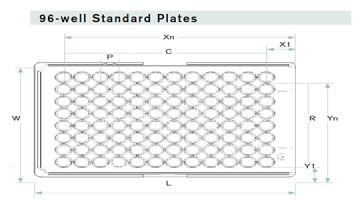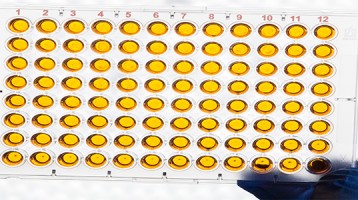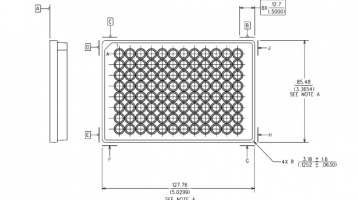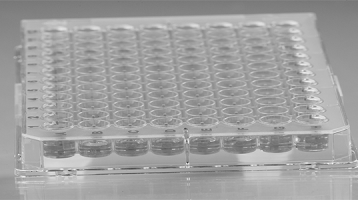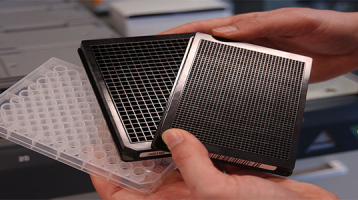The 96-well cell culture surfaces BRANDplates are available in the following four different plate surfaces: cellGrade, cellGrade plus, cellGrade premium, and inertgrade. The cell culture microplates are easily recognizable through the use of the orange embossed alphanumeric color coding for the 96-well standard plates. Standard 96-Well cellGrade Cell Culture Surface Microplates The cellGrade 96-well plates are […]
96-Well Plate Dimensions [Standard Microplate]
Technical Information About BRANDplates Standard Microplates ANSI- /SLAS – Standard 1 to 4 – 2004 BRANDplates® microplates are manufactured according to the ANSI-/SLAS-Standards 1 to 4 – 2004, to ensure compatibility for all processes, especially when automation is involved. For some automated systems, knowledge of the exact dimensions of the microplates are required. The information contained […]
Three Ways To Reduce Microplate Edge Effect
Preventing Edge Effect In Microplates Microplates are essential tools for the assay biologist, whether performing biochemical or cell-based assays. Biochemical and cell-based assays share the issue of edge effect. The primary cause for the “edge effect” phenomenon is evaporation and is commonly associated with 96-well microplates. “Edge effect” is an issue attributed to the increased […]
What Is A Plate Reader?
Intro To Plate Readers Microplate readers are also referred to as plate readers are laboratory instruments designed to detect biological, chemical or physical events in microplates¹ via the measurements of light. Plate readers are commonly found in many laboratories and are widely used for many applications across a wide range of disciplines, including life sciences, research, […]
96-Well Plate Footprint Dimensions – ANSI/SLAS 1-2004 (R2012)
96-Well Plate Footprint Dimensions Microplate Standard Overview The standard established by the former Society for Biomedical Sciences (SBS) now the Society for Laboratory Automation and Screening (SLAS) defines the dimensional requirements of the footprint of a microplate as specified in the American National Standards covering these microplates. This standard was devised to describe the […]
ANSI/SLAS Microplate Standards
ANSI/SLAS Microplate Standards (ANSI/SLAS 1 to 4 – 2004) The Society For Laboratory Automation And Screening (SLAS) is not a standardizing organization, they are a society that provides a working group the ability and platform to standardize along with the American National Standards Institute (ANSI). ANSI The American National Standards Institute is a private, non-profit […]
The History Of The Microplate
The First Microplate The well plate or microplate was created in 1951 by Hungarian physician, scientist, and inventor Dr. Gyula Takátsy, who hand-machined 6 rows of 12 “wells” out of Poly(methyl methacrylate (PMMA) or more commonly know by its trade name as Lucite. PMMA was developed in 1928 in various labs by multiple chemists and became commercially […]

